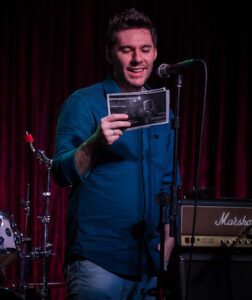Learn how to sing in key and with rhythm!
Let’s see: you got here because you tried to sing some songs and realized (or someone told you) that you didn’t sing in key and/or were singing without rhythm.
Well, follow some of our recommendations for a while and you are likely to improve a lot these points.
Pitch difficulties of any singer have basically two causes:
1) Difficulties related to ear training
There are many layers of ear training development in any musician’s career. From the most basic – understanding and reproducing notes that get higher or lower, how much they are going up or going down (also known as musical intervals – if they go up a little like a minor third or a lot like a major sixth) etc. – to the most advanced – just listening to the songs, identify all the notes of the melody and chords, as well as the instrumentation of the arrangement.
As a musician studies (through courses and lessons or on his/her own) and works with music (during rehearsals, recordings and concerts), his/her level of ear training tends to gradually improve.
We consider that accurate pitch requires at least an intermediate level of ear training.
Raphael Begosso Vocal Studio recommends the Ear Master apps (https://www.earmaster.com).
But as we always say, music theory helps – a lot – ear training, so we also recommend the Theory lessons from books.
A study that can also help many people is Melodic Solfeggio.
Basically, it consists of singing melodies with the name of the notes from a score. A book that we can recommend (although there are better ones, but they are not so easy to find) is this one:
Pozzoli – Parts III and IV
2) Difficulties related to vocal technique
If a certain singer has at least an intermediate level of ear training and cannot sing in key on the high notes of a certain song, for example, then we can say that vocal technique will help him/her to solve these difficulties.
You may not have fully control of your singing muscles or they can ben weak. Perhaps you could do a best use of a particular resonator. Perhaps your voice is unbalanced, etc. The possibilities are endless and it is impossible, in this case, to give a recommendation without listening to you individually during a voice lesson.
So, to solve this we recommend that you study the vocal technique exercises we did during the voice lessons. At the beginning of the lesson, we always do a warm-up (usually the first 3 exercises) and then we move on to the vocal technique exercises.
In all of our sessions, we record only the piano and the demonstration to make it easier for our students to practice. We also record the student singing, but this is more for them to listen once a week to help them identify the mistakes. The source of your practice should be the file with the recorded piano.
What about the rhythm?
As for rhythm, it is very much related to ear training and music theory as well.
Understanding pulsations, subdivisions, rhythmic groupings and being able to reproduce them is the key for you to study.
The Ear Master App has an interesting rhythm section, but there’s a rhythmic solfeggio book that we recommend students do a little bit each day:
Pozzoli – Parts I and II
As we have seen, with an adequate plan and guidelines, study and dedication, you can improve your pitch and your rhythm. Of course, we’re not machines, so some fluctuation is tolerable (especially in live situations).
Also consider reading our vocal health post (here) to make sure all your pitch improvement translates into your singing-related appointments every day.





